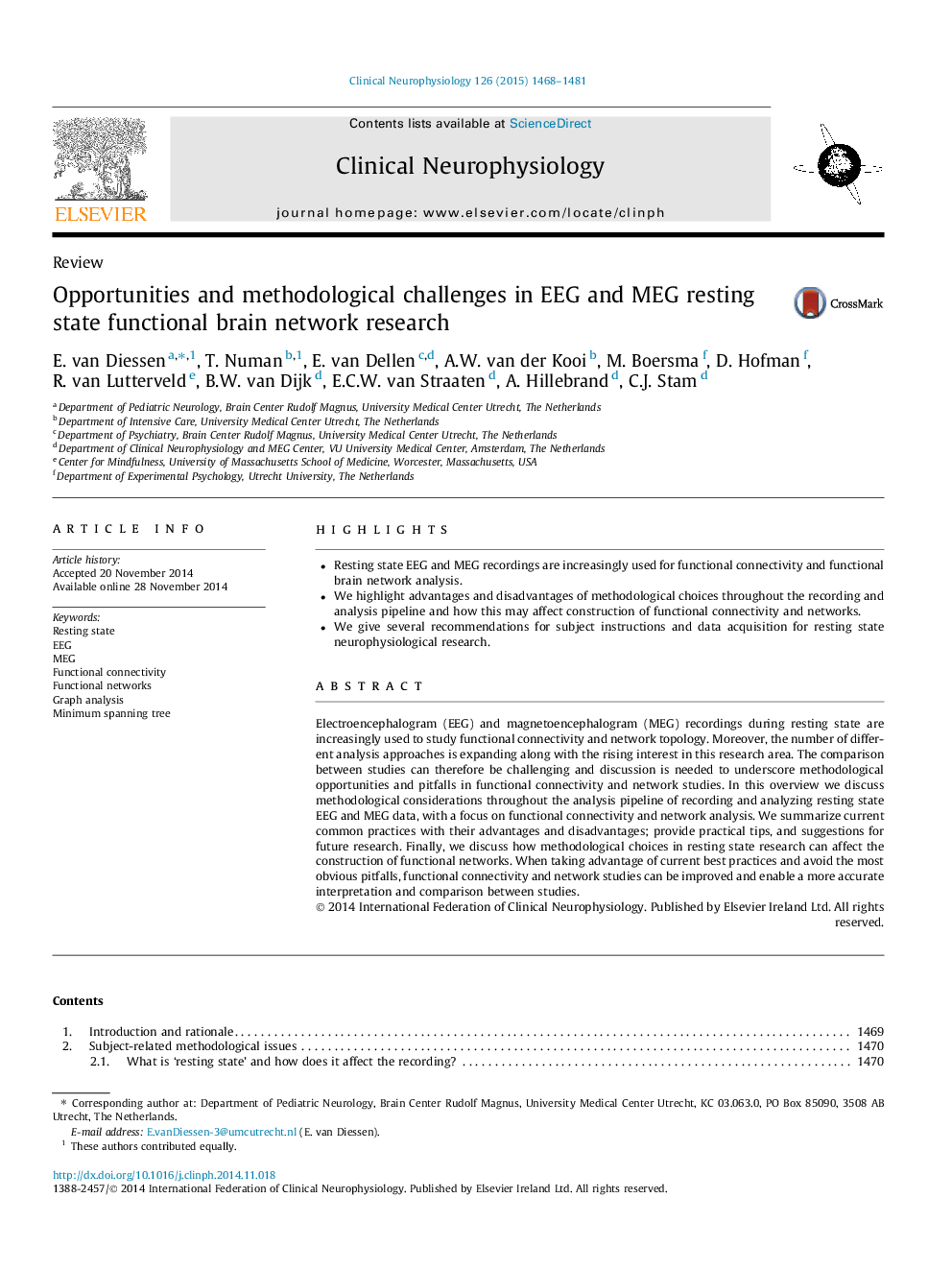| Article ID | Journal | Published Year | Pages | File Type |
|---|---|---|---|---|
| 3042546 | Clinical Neurophysiology | 2015 | 14 Pages |
•Resting state EEG and MEG recordings are increasingly used for functional connectivity and functional brain network analysis.•We highlight advantages and disadvantages of methodological choices throughout the recording and analysis pipeline and how this may affect construction of functional connectivity and networks.•We give several recommendations for subject instructions and data acquisition for resting state neurophysiological research.
Electroencephalogram (EEG) and magnetoencephalogram (MEG) recordings during resting state are increasingly used to study functional connectivity and network topology. Moreover, the number of different analysis approaches is expanding along with the rising interest in this research area. The comparison between studies can therefore be challenging and discussion is needed to underscore methodological opportunities and pitfalls in functional connectivity and network studies. In this overview we discuss methodological considerations throughout the analysis pipeline of recording and analyzing resting state EEG and MEG data, with a focus on functional connectivity and network analysis. We summarize current common practices with their advantages and disadvantages; provide practical tips, and suggestions for future research. Finally, we discuss how methodological choices in resting state research can affect the construction of functional networks. When taking advantage of current best practices and avoid the most obvious pitfalls, functional connectivity and network studies can be improved and enable a more accurate interpretation and comparison between studies.
